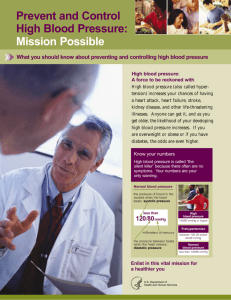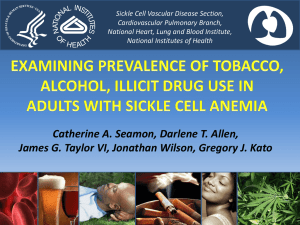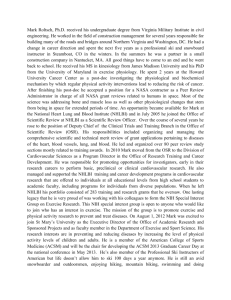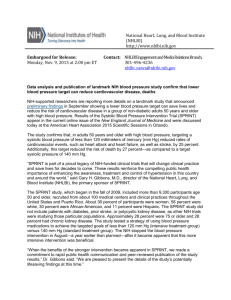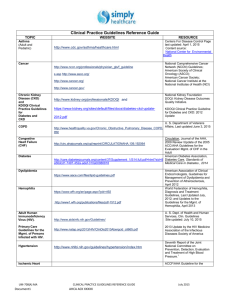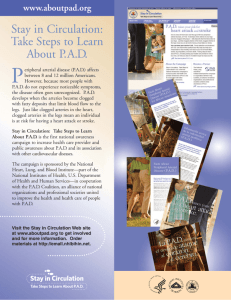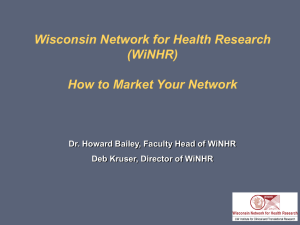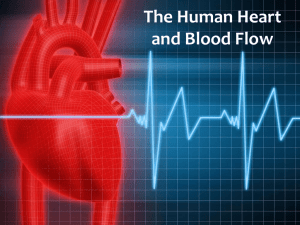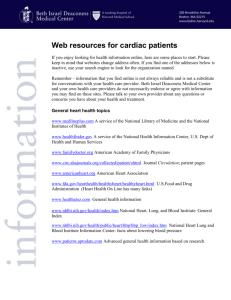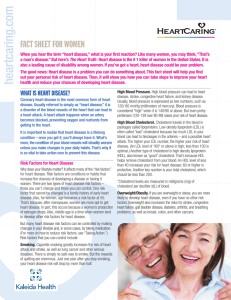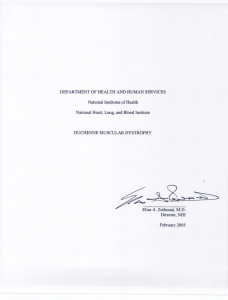Hypertension Physician Fact Sheet
advertisement
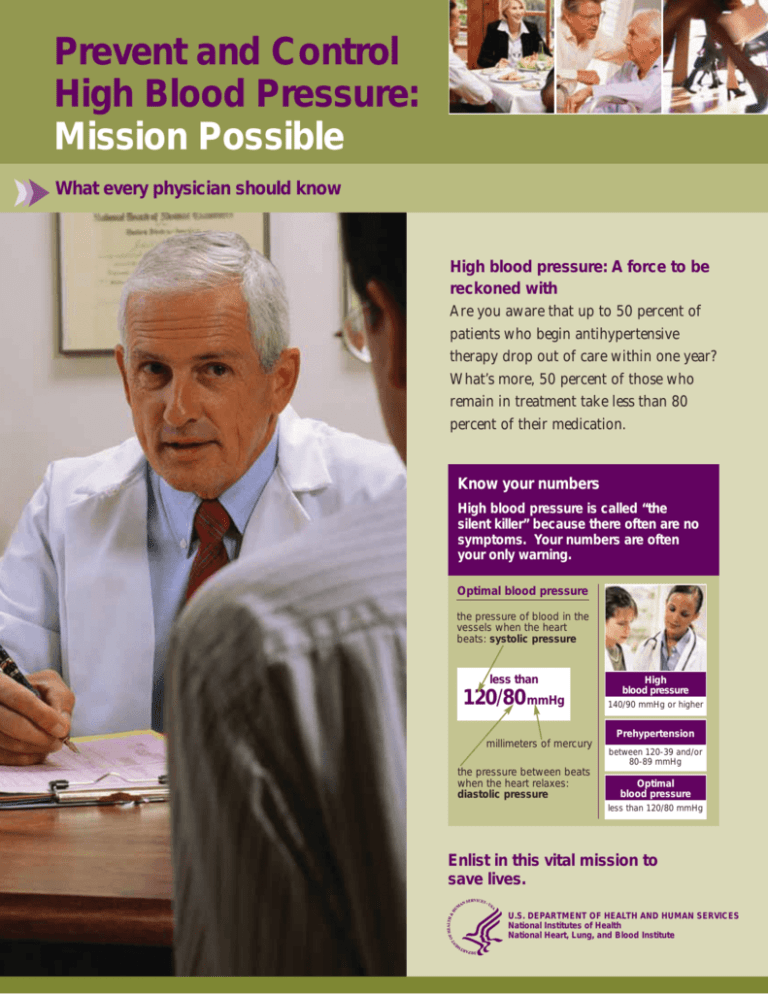
Prevent and Control High Blood Pressure: Mission Possible ➤➤➤ What every physician should know High blood pressure: A force to be reckoned with Are you aware that up to 50 percent of patients who begin antihypertensive therapy drop out of care within one year? What’s more, 50 percent of those who remain in treatment take less than 80 percent of their medication. Know your numbers High blood pressure is called “the silent killer” because there often are no symptoms. Your numbers are often your only warning. Optimal blood pressure the pressure of blood in the vessels when the heart beats: systolic pressure less than 120/80 mmHg High blood pressure 140/90 mmHg or higher Prehypertension millimeters of mercury the pressure between beats when the heart relaxes: diastolic pressure between 120-39 and/or 80-89 mmHg Optimal blood pressure less than 120/80 mmHg Enlist in this vital mission to save lives. U.S. DEPARTMENT OF HEALTH AND HUMAN SERVICES National Institutes of Health National Heart, Lung, and Blood Institute 6 ➤➤➤ Increase patient adherence Some simple things you can do to increase patient adherence to hypertensive medication: ● Provide simple, easy-to-follow written and oral instructions. ● Tailor instructions so they address patients’ lifestyles, needs, and reasons for non-adherence. ● Address potential for adverse effects and tailor regimens to patients’ concerns and needs. ● Try behavioral strategies, such as reminder systems, cues, self-monitoring, and feedback. Increase patient knowledge Resources to help your patients Your Guide to Lowering High Blood Pressure includes information on how to detect, prevent, and treat high blood pressure. Features the DASH diet, which has been shown to prevent and lower high blood pressure, and information specifically for women. www.nhlbi.nih.gov/hbp/index.html Aim for a Healthy Weight includes a BMI calculator, tips for shopping and preparing food, and a menu planner that is designed to guide daily food and meal choices based on 1 day's calorie allowance. www.nhlbi.nih.gov/health/ public/heart/obesity/lose_wt/index.htm Live Healthier, Live Longer includes interactive materials for people with heart disease and those who want to prevent it. www.nhlbi.nih.gov/chd/index.htm Talk to your patients about: ● Their blood pressure numbers and what they mean. General information and publications. ● Their risk of heart attack, stroke, congestive heart failure, diabetes, and kidney failure. ● The increased risks associated with high normal blood pressure. ● The value of even small changes in diet and physical activity in preventing and controlling high blood pressure. NHLBI Health Information Center P.O. Box 30105 Bethesda, MD 20824-0105 Tel 301-592-8573; Fax 301-592-8563 (Monday - Friday, 9 a.m. to 5 p.m. eastern time); TTY 240-629-3255 www.nhlbi.gov/health/infoctr U.S. DEPARTMENT OF HEALTH AND HUMAN SERVICES National Institutes of Health National Heart, Lung, and Blood Institute National High Blood Pressure Education Program NIH Publication No. 04-5266 March 2004
